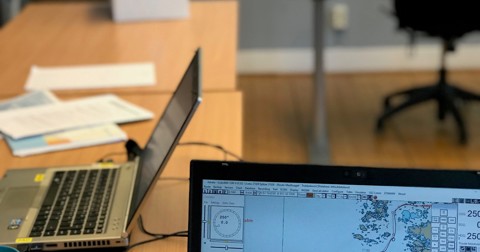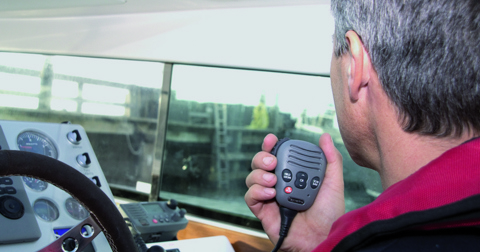Kursbeskrivning
Kursen vänder sig alla med någon form av ledningsansvar ombord eller iland. Eleverna förväntas aktivt delta i specialutformade gruppövningar med fokus på kommunikation. Vi blandar gärna maskinbefäl, nautisk befäl samt landpersonal i våra kurser.
En stor del av kursen består av grupparbete/workshops och diskussioner som bygger på IMO model course 1.39 och 1.22. Därtill kommer vi att analysera och diskutera en del välkända maritima olyckor. Kursen, som omfattar 3 dagar plus förberedande självstudier, bygger på följande anvisningar i STCW:
Reg. A-II/1 for Bridge Resource Management
1. Reg. A-III/1 for Engine-room Resource Management
2. Reg. A-II/2 and A-III/2 for Use Leadership and Managerial Skills
3. Reg. A-II/1, A-III/1 and A-III/6 for Application of Leadership and TeamworkingSkills
I vår kurs har vi valt att inte använda navigationssimulator. Skälet till detta är att det inte i första hand är en kurs för bryggbefäl utan mer en kurs i allmänt ledarskap och effektivt nyttjande av personella resurser
-
Läkarintyg för sjöfolk
-
3 dagar plus förberedande självstudier
9.00- ca 17.00 alla dagar
-
Digitalt förstudiematerial får man i samband med bokning.
Övrig kurslitteratur fås på plats
-
Obligatorisk närvaro på alla moment. Examination sker genom ett antal delprov under kursen.
-
Kursen omfattar följande delar:
Ur innehållet:
- Situation Awareness
- Attitudes and Management Skills
- Cultural Awareness
- Communication and Briefings
- Challenge and Response
- Short Term Strategy
- Authority and Assertiveness
- Management Styles
- Workload
- State of the Ship
- Human Involvement in Error
- Judgment and Decision Making
- Leadership in Emergencies
- Crisis and Crowd Management
- Automation Awareness
-
BRM, MRM and BTM - Useful clarification
Intertanko have published useful clarification about the various educational courses relating to bridge procedures and management.
Bridge Resource Management (BRM) is a course that was originally developed from the airline industry´s Crew Resource Management (CRM). Human behaviour and psychological and physiological factors are very much the same both aviation and shipping and in 1993 the shipping industry´s first BRM course was introduced.
The primary target groups for BRM were initially Masters, deck officers and pilots. However, since not all accidents originate from the bridge, the course is now often referred to as Maritime Resource Management (MRM) with additional target groups – such as engineers and shore-based personnel.
BRM/MRM´s main focus is to change attitudes with the objective of establishing a safer and more efficient teamwork on board ship. The course aims to create good team leaders and team members by addressing issues related to leadership, management styles, culture, communication automation, stress, fatigue, etc. BRM and MRM have an equal status in the syllabus, but some changes have been made in the training courses.
MRM is considered to be particularly useful training for all personnel involved with ship operations, such as ships ‘officers, engineers, pilots, tug-operators, VTS-personnel and other shore-based staff, because of its updated course contents and terminology.
BRM and MRM certificates are considered to have equal status. However, there is also a Bridge Team Management (BTM) certificate which covers different material to the BRM and MRM.
BTM generally has a totally different syllabus. The main topics of BTM courses are most often bridge procedures and passage planning. BTM focuses on the importance of complying with existing means of navigation procedures, such as the establishment of a voyage plan, regular position fixes, lookout. Most of the major oil companies require officers onboard ships to have undergone training courses in the above subjects, and specify this in their Vetting Inspection Questionnaire. So it is important to be familiar with the differences between BRM, MRM and BTM.
A certificate is issued after the trainee has passed the actual course, with separate certificates for BRM/MRM and BTM. Some training centres are able to combine a BRM/MRM course with a BRM course.
A BRM/MRM course often takes about 3-4 days and may be carried out with or without simulator exercises.
The aforementioned certification falls within Part B of STCW and is recommended rather than mandatory unless expressly required by flag state.



